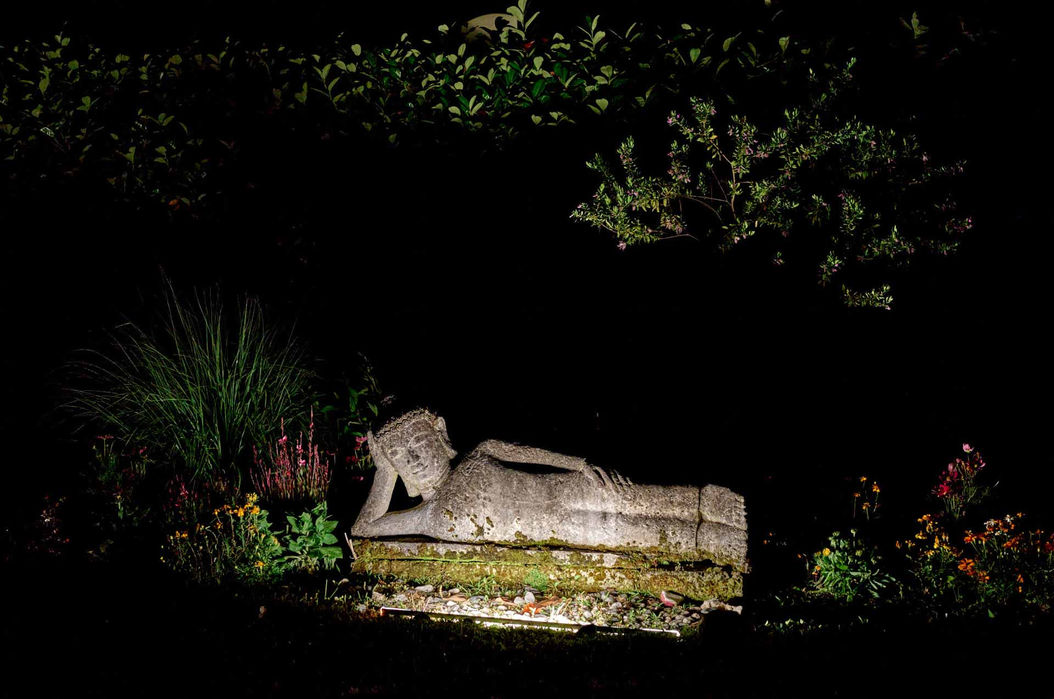Buddha Sdraiato/ Parinirvana
Lying between the grass and the flowerbed of the Heller garden we see a portrait of Buddha, lying down and in a complete state of Zen. In Buddhism the word “parinirvana” is the Sanskrit description for the state that one can enter after death if they have attained Nirvana during their lifetime.
According to Buddhist teachings, when ordinary people die, any of their unresolved karma will be passed on to a new birth, creating a cycle of karmic inheritance. However, if a person has been able to extinguish the “Three Fires” or passions known as greed, aversion, and ignorance, only then will they be able to grasp their mind and achieve the ultimate state of Nirvana. This means that when they die, they will not have any unresolved karma to pass on, and they will be liberated from karmic rebirth. In turn, this means that the cycle of rebirth is stopped.
This teaching came about when Buddha was eighty, and he was not in good health. He knew that his life was soon to draw to a close, and he began contemplating his own existence. In one of his final teachings, he describes how everyone should be responsible for their own spiritual well-being and that they can do this by establishing their own place of refuge in which to practice mindfulness.
“Be your own island, your own refuge, with no other refuge. Let the teaching be your island and your refuge, with no other refuge.”
- Buddha
Traditionally, in Buddhist art, a lying down Buddha would be depicted surrounded by his disciples. However, here in the Heller Garden the Buddha is surrounded by beautiful plants and an array of some of the most intriguing sculptures in the world. Both the flowers and the other artists have become his new disciples, creating a wonderful blend of art, nature and spirituality.


